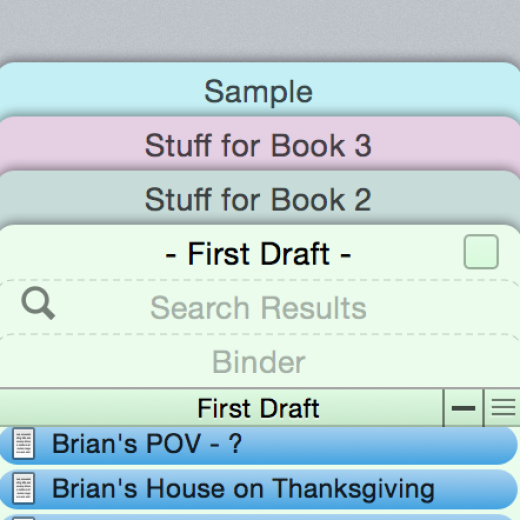6 Wrenches to Throw in Your Fiction for Fun and Profit by Wyatt Bessing
 Welcome back to another one of Writer’s Fun Zone’s monthly columnists: Wyatt Bessing. A writing coach and teacher, author, Wyatt Bessing shares his fun take on games, play, and how they help our writing. This month Wyatt helps us throw a few wrenches into our fiction for fun and profit. Enjoy!
Welcome back to another one of Writer’s Fun Zone’s monthly columnists: Wyatt Bessing. A writing coach and teacher, author, Wyatt Bessing shares his fun take on games, play, and how they help our writing. This month Wyatt helps us throw a few wrenches into our fiction for fun and profit. Enjoy!
***
At the Society for Children’s Book Writers and Illustrators conference earlier this month, I came away with this important message: Editors and agents are looking for a unique voice and vision; and readers of all ages enjoy weird, subversive stories. This is great news for writers like myself, as I have always loved playing with my writing in odd, unexpected ways. It just gives me a license to play more!
Subverting expectations in the structure and voice of your writing is a great way not only to wake up your readers, but wake yourself up as a writer. Natalie Goldberg reminds writers to look at writing as if it were a piece of rock or tree struck by lightning, the insides laid bare to new perspectives. At the conference, I heard this over and over again: Break through that structure and present your subject in a unique way.
In the spirit of play and subversion, I present this month’s game. Here’s a description of the six wrenches you can throw into your writing. After I present you with your tools, I’ll tell you how to play with them.
1. Break the Fourth Wall
A favorite technique of “postmodern” writers, but increasingly popular with children’s and young adult writers as well, metafiction is self-aware writing in which the story itself becomes a subject or character. For example, in Birthday Bunny/Battle Bunny, writers Jon Scieszka and Mac Barnett created an altered text about a Birthday Bunny who becomes Battle Bunny within the story, all the cuteness and innocent storyline erased and overwritten by a dangerously creative bunny. A classic example in adult literature, Slaughterhouse Five introduces Kurt Vonnegut as its author within its pages, forcing the reader to examine the truthfulness of the horrific events portrayed in the novel.
2. Play With Text
Crossing out or visibly deleting words as Scieszka and Mac Barnett do in Birthday Bunny is only one way to play with the way that text looks within your story. Why not introduce poetry or songs, ala Lord of the Rings? In his awesome House of Leaves, posing as a scholarly study of a fictitious film, Mark Z. Danielewski uses different fonts for different voices, footnotes referencing imaginary and probably real sources, and even different text colors. Even if these tricks don’t make it into your final draft, they’re guaranteed to help you see your work-in-progress with new eyes.
3. Break Through Structure
Fiction need not be a linear story. You can (and probably should!) hop from lily pad to lily pad, showing us the most important scenes while glossing over the unimportant transitions. But what about telling the story from it’s climax backwards? Or revealing the resolution on the first page? How about a chapter or an entire book rendered as fragments from a lost journal, out of order?
4. Invite Participation
A subset of metafiction, interactive fiction asks your reader to do something within the story. This might be as simple as one of those old Choose Your Own Adventure stories: “Turn to Page 6 if you go into the haunted house.” In the children’s book Billy Twitters and His Blue Whale Problem, Marc Barnett included a postcard kids could send in to adopt their own blue whale. He even set up a phone number for them to call in to leave messages for their adopted pet, and would send a letter apologizing for being unable to send a real whale! If you’re writing a book in which a character makes a careful plan for solving a problem, be it environmental, social, or person, you are inviting your reader to follow the plan.
5. Subvert Expectations
The Fractured Fairy Tale is the classic example of this, taking a well known story and reversing it in some way. Don’t let the reader get what he or she expects! I recommend you do this in all your fiction. In my own work-in-progress, I realized my male hero had a pattern of rescuing women in distress. That’s too predictable and sexist, so I subverted it. Instead, the girlfriend he plans to rescue has already escaped and may be tracking him down!
6. Manipulate Point of View
Again, this may not make it into your final draft, but it’s a great exercise for seeing another side of your characters and conflicts. Write a page or two from your antagonist’s POV, or from that of a disinterested observer.
Now that you have your six wrenches, throw two of them. Roll two dice, and read the corresponding numbers on above.
Quickly now, write 250 words without thinking, letting those wrenches, your thoughts, and all five of your senses collide.
***
 Wyatt Bessing is a writer, writing coach, and learning specialist. His stories and essays have appeared in Bedtime-Story.com, Outsider Ink, national educational assessment materials, and in the anthology Dance, Human Rights, and Social Justice. Through his workshops, website, and blog at wyattgbessing.com, he guides new and experienced writers in crafting more effective, expressive, and striking work. During the day, he works at Star Academy in San Rafael, teaching reading and comprehension skills to students with learning differences in elementary through high school. He lives in Santa Rosa, CA with his wonderful fiance and co-creator, Sarah Laugtug.
Wyatt Bessing is a writer, writing coach, and learning specialist. His stories and essays have appeared in Bedtime-Story.com, Outsider Ink, national educational assessment materials, and in the anthology Dance, Human Rights, and Social Justice. Through his workshops, website, and blog at wyattgbessing.com, he guides new and experienced writers in crafting more effective, expressive, and striking work. During the day, he works at Star Academy in San Rafael, teaching reading and comprehension skills to students with learning differences in elementary through high school. He lives in Santa Rosa, CA with his wonderful fiance and co-creator, Sarah Laugtug.







BRAVO!! Great wrenches!